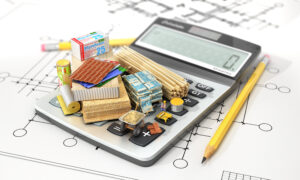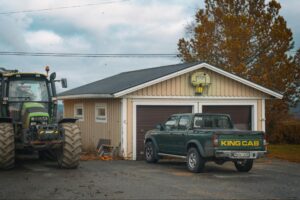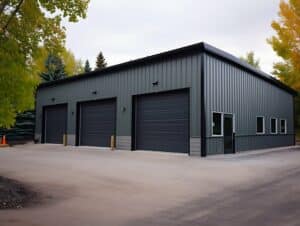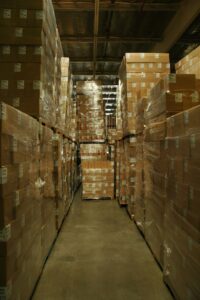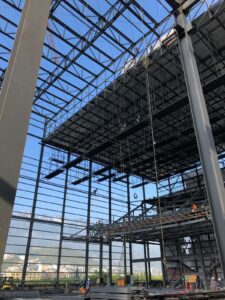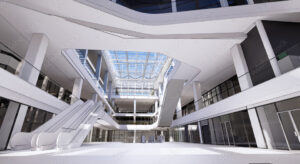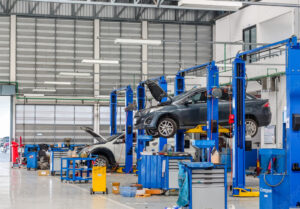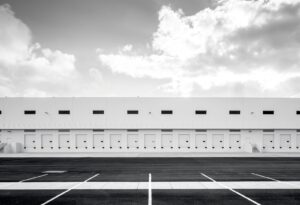Indoor softball facilities and equipments provide a convenient and reliable way for athletes to practice and play the game year-round.
The market size of the Indoor Sports Facilities Management industry, which includes indoor softball facilities, is valued at $1.4 billion. In 2023, the US had 11,032 Indoor Sports Facilities Management businesses.
Whether you are a professional team looking for a state-of-the-art facility or a community organization wanting to create a welcoming space for local softball enthusiasts, building a top-tier indoor softball facility requires careful planning, thoughtful design, and precise construction.
In this article, we will take a closer look at the key considerations, equipments and steps involved in creating a top-tier indoor softball facility building.
Table of Contents:
- Understanding the Basics of Indoor Softball Facilities
- Planning Your Indoor Softball Facility
- Designing Your Indoor Softball Facility
- Construction of Your Indoor Softball Facility
- Equipping Your Indoor Softball Facility
- Conclusion
- Frequently Asked Questions
Understanding the Basics of Indoor Softball Facilities
Before diving into the nitty-gritty of facility planning and design, it’s important to understand the basics of indoor softball facilities. These facilities are enclosed structures specifically designed to accommodate softball practices, games, and tournaments in an indoor setting.
They offer a controlled environment where temperature, lighting, and other factors can be optimized for enhanced performance and player safety.
Indoor softball facilities have revolutionized the way the sport is played and experienced. Gone are the days when rain, snow, or scorching heat would force players to cancel their games or practices.
With these state-of-the-art facilities, softball enthusiasts can now enjoy the game they love all year round, regardless of the weather conditions outside.
Check out: A Guide To Building An Indoor Sports Complex
Importance of a Well-Designed Indoor Facility
A well-designed indoor softball facility can have a significant impact on the overall experience and success of both players and spectators. It provides a comfortable and climate-controlled environment, shields players from adverse weather conditions, and allows for year-round training and competition.
Additionally, a well-designed facility can attract more players, spectators, and sponsors, helping to grow the popularity and influence of the sport in the community.
Imagine stepping into an indoor softball facility that feels like stepping into a professional stadium. The air is crisp and cool, the lighting is perfect, and the sound of bats hitting balls echoes throughout the space.
This kind of atmosphere not only enhances the players’ performance but also creates an unforgettable experience for spectators, making them feel like they are part of something truly special.
Key Features of a Top-Tier Indoor Softball Facility
Several key features contribute to the success of a top-tier indoor softball facility. These include:
- Ample space for batting cages, pitching mounds, and fielding areas to accommodate multiple teams simultaneously
- A quality lighting system that mimics natural daylight and minimizes shadows
- Efficient ventilation and climate control to maintain a comfortable playing environment
- Proper fencing and netting to ensure player and spectator safety
- Functional restrooms, locker rooms, and amenities for players and visitors
When it comes to designing an indoor softball facility, attention to detail is crucial. Every aspect, from the layout of the space to the choice of materials, should be carefully considered to create an environment that promotes optimal performance and enjoyment.
The dimensions of the facility should adhere to the official regulations, ensuring that players can practice and compete in a space that closely resembles the outdoor game.
Furthermore, the facility should be equipped with cutting-edge technology that allows for advanced training and analysis. From high-speed cameras that capture every swing and pitch to virtual reality simulators that provide realistic game scenarios, these technological advancements can take the indoor softball experience to a whole new level.
Did You Know?
Approximately 40 million people in the U.S. play softball, with over 140,000 registered teams across the country.
Planning Your Indoor Softball Facility
Proper planning is crucial to the success of any construction project, and building an indoor softball facility is no exception. Here are some essential steps to take during the planning phase:
Planning an indoor softball facility involves more than just laying down turf and setting up bases.
It requires a comprehensive understanding of the needs and goals of the players and the community it serves.
By taking the time to carefully consider these factors, you can create a space that not only meets the immediate needs of the players but also fosters a sense of community and sportsmanship.
Identifying Your Facility Needs
Start by identifying your facility’s needs and goals. Consider the number of teams using the facility, the level of play, and the specific requirements of your organization or community. This will help you determine the size and layout of your facility, as well as the amenities and equipment necessary to meet your indoor softball facility needs.
Think beyond the basic requirements of a softball field. Consider adding batting cages, pitching tunnels, and spectator seating to enhance the overall experience for players and fans.
Creating a versatile space that can accommodate different types of events, such as tournaments or clinics, can also increase the facility’s appeal and utility.
Choosing the Right Location
Choosing the right location for your indoor softball facility is crucial. Look for a site that is easily accessible, centrally located, and has adequate parking. Consider proximity to schools, residential areas, and other amenities that may attract players, spectators, and volunteers.
Conduct a thorough feasibility study to ensure that the chosen location meets zoning requirements and permits the construction of the desired facility.
Additionally, consider the surrounding landscape and potential for future expansion. A location with room for growth can allow you to expand your facility in the future to accommodate a growing player base or additional programming.
By thinking long-term during the planning phase, you can ensure that your indoor softball facility remains a valuable asset to the community for years to come.
Designing Your Indoor Softball Facility
Space Utilization and Layout
Efficient space utilization and layout are key considerations when designing your indoor softball facility. Optimize the available space to accommodate multiple teams, batting cages, pitching mounds, and fielding areas.
Create designated areas for spectators, restrooms, and locker rooms. Additionally, ensure that the layout promotes smooth traffic flow, easy accessibility, and clear visibility for both players and spectators.
When planning the layout of your indoor softball facility, it’s important to consider the flexibility of the space. Incorporating movable fencing or netting can allow you to adjust the size of playing areas based on the specific needs of different teams or events.
This versatility can enhance the overall functionality of the facility and cater to a variety of programming, such as tournaments, clinics, or practice sessions.
SteelCo Buildings specializes in providing steel building materials for indoor softball and recreational facilities. We offer pre-engineered designs and customizable options to meet the specific needs of each project.
Lighting and Ventilation Considerations
Lighting and ventilation play crucial roles in creating a comfortable and safe playing environment. Install a lighting system that provides optimal visibility without creating harsh shadows. Consider natural lighting options such as skylights or large windows, if feasible. Additionally, ensure proper ventilation to maintain good air quality and prevent the buildup of moisture.
Effective lighting design can also contribute to the aesthetic appeal of your indoor softball facility. Incorporating programmable LED lights that can be adjusted to different brightness levels or colors can create a dynamic atmosphere for games or events.
Furthermore, integrating smart ventilation systems equipped with sensors to monitor air quality and regulate airflow can enhance player comfort and overall indoor environmental quality.
Check out: Cooling Solutions For Metal Buildings
Construction of Your Indoor Softball Facility
Selecting the Right Construction Materials
When constructing your indoor softball facility, choose high-quality materials that can withstand the demands of the game and provide long-term durability.
Consult with experienced architects, engineers, and construction professionals to ensure that the materials meet safety standards and are suitable for the specific requirements of an indoor softball facility.
Consider using materials such as impact-resistant wall panels, durable synthetic turf for the playing surface, and reinforced steel beams for structural support.
These materials not only enhance the longevity of your facility but also contribute to a safer playing environment for athletes and spectators alike.
Ensuring Safety Standards
Player safety should be a top priority when building an indoor softball facility. Adhere to all safety regulations, including proper fencing and netting to protect players and spectators. Install proper lighting to minimize the risk of accidents and injuries.
Consider implementing safety measures such as first-aid stations and emergency exits to ensure a safe environment for everyone.
Additionally, conduct regular safety inspections and maintenance checks to identify and address any potential hazards promptly. Train staff members on emergency procedures and ensure that all indoor softball safety equipments, such as fire extinguishers and defibrillators, are readily available and in working condition at all times.
By prioritizing safety throughout the construction and operation of your indoor softball facility, you create a welcoming and secure space for players of all levels to enjoy the game.

Equipping Your Indoor Softball Facility
To create a top-tier indoor softball facility, it’s important to equip it with the right materials and equipment. Here are some essentials to consider:
Choosing the Right Turf
Selecting the right turf for your indoor softball facility is crucial for providing a top-notch playing experience. Opt for a high-quality turf that closely mimics real grass, offering players a surface that feels natural underfoot.
Consider factors such as durability, shock absorption, and maintenance requirements when choosing the turf for your facility. A turf with good shock-absorption properties can help reduce the risk of player injuries, making it a valuable investment in player safety.
Additionally, think about the aesthetic appeal of the turf. Choosing a turf that looks vibrant and well-maintained can enhance the overall atmosphere of your facility, creating a professional and inviting environment for players and spectators alike.
Pro tip:
The GT34 Turf is highly recommended for indoor softball facilities. It features a polyethylene yarn for a soft feel and a 5mm foam pad for cushioning, which helps it react more like real grass than unpadded turf options.
Essential Training Equipment for Your Facility
Equipping your indoor softball facility with essential training equipment is key to providing players with the tools they need to improve their skills. Consider including pitching machines, batting cages, pitching mounds, fielding equipment, and scoreboard systems to cater to a wide range of training needs in the indoor softball facility.
Investing in state-of-the-art technology can take player development to the next level, offering features such as data tracking, video analysis, and interactive training programs.
Furthermore, consider the layout and organization of the training equipment within your indoor softball facility. Creating designated areas for different training activities can help optimize player workflow and maximize the use of space.
By strategically placing equipment such as batting cages near pitching machines and fielding areas, you can create a seamless training experience that allows players to transition between drills efficiently.
Conclusion
Creating a top-tier indoor softball facility building requires careful planning, thoughtful design, and precise construction.
By understanding the basics of indoor softball facilities, identifying your facility needs, choosing the right location, designing a functional layout, selecting quality materials, and equipping your facility with the necessary equipment, you can create a space that fosters growth, development, and enjoyment for softball players and fans.
With a well-designed and well-equipped facility, you can take your softball program to new heights and strengthen the sport’s popularity in your community.
SteelCo has more than 23 years of experience dropshipping customizable steel building materials for indoor sports complexes and recreational facilities nationwide.
Our team of experts, from Project Support Specialists and Sales Consultants to our in-house Designer, Architect, and more, ensures you have the necessary and customizable building kits to construct your ideal indoor softball facility with industry-leading turnaround times and service.
———————————-
Frequently Asked Questions
How many sq ft is a softball field?
The standard dimensions for a softball field are typically 300 feet in length and 150 feet in width, which equates to 45,000 square feet. However, these dimensions can vary significantly depending on the league and level of play. For example, the distance between bases for fastpitch softball is usually 60 feet, creating a square infield with sides of 60 feet each.
What is the slope of a softball field?
The slope of a softball field is designed to ensure proper drainage and prevent water accumulation. The best practice for constructing a softball field is to maintain a 0.5% slope for the infield and extend the crown to about one-third of the way to the outfield fence. The outfield should maintain a 1 to 1.5% slope, allowing water to drain in all directions from the center point of the field.
How many feet between bases in softball?
The distance between bases in softball varies depending on the type of game being played. In fastpitch softball, the bases are 60 feet apart. However, in slowpitch softball, the distance increases to 65 feet, regardless of whether a 12-inch or 11-inch ball is used. These are the standard distances and may vary slightly based on the specific league or organization.
What are the dimensions of the home plate in softball?
The home plate in softball is a pentagonal slab made of rubber or a similar white material. The dimensions are as follows:
- The two sides closest to the pitcher are 8.5 inches long.
- The edge facing the pitcher is 17 inches wide.
- The two sides of the point facing the catcher are 12 inches long.
———————————————–
Check out these related articles:
> Indoor Basketball Court Building Solutions
> State-Of-The-Art Indoor Football Field Buildings


